The building that today stands as the parish church of Nuestra Señora de la Encarnación, the main Catholic church in Casariche, was erected with the funds of the Marquises of Estepa in 1580. It was not blessed until 13 June 1676, coinciding with San Antonio Day, when Don Jerónimo de Ribera, ecclesiastical judge of the town of Estepa, consecrated the building as a parish church, with Don Alonso de Arias as priest. With the passage of time, the deterioration of the church required a reform that took place on 31 January 1749, works that were used to increase its dimensions in view of the demographic growth of the town. After its completion, the place was blessed again by the priest Don Juan Medina Velasco.
In contemporary times, the exterior appearance of the church has undergone significant changes. The first of these concluded with the new belfry in 1960, as the previous belfry had been destroyed by a strong storm in 1959. Later, in 1987, the work focused on the restoration and consolidation of the roof. Finally, the fourth reform, carried out between 2002 and 2003, focused on the external appearance of the church and achieved a notable transformation.
The interior is composed of a Latin cross square, half-barrel vaults and a transept covered by a large vault on pendentives. Its single nave has chapels, distributed on both sides, which are located between the interior buttresses of the church. In terms of heritage, the baptismal font, where the date of blessing of the church is inscribed, and the enormous late-baroque altarpiece in the chancel stand out, elements from the 17th and 18th centuries respectively. This altarpiece was originally located in the convent of La Victoria de Estepa, which no longer exists, and now serves as the main altar, where there is a small chapel with the image of Nuestra Señora de la Encarnación, patron saint of Casariche and made by Castillo Lastrucci in 1937. Other images that can be found in the church are: Nuestro Padre Jesús Cautivo, Nuestra Señora de los Dolores, Nuestro Padres Jesús Nazareno, María Santísima de la Esperanza, Santísimo Cristo de la Expiración, Cristo Yacente, Santiago Apóstol or San Antonio, as well as San Marcos or San Isidro, the latter linked to the two local pilgrimages.
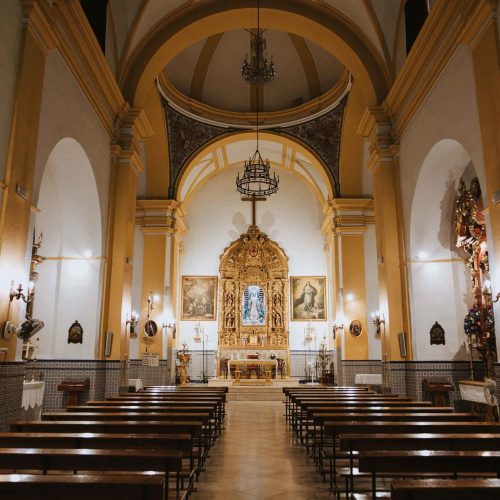
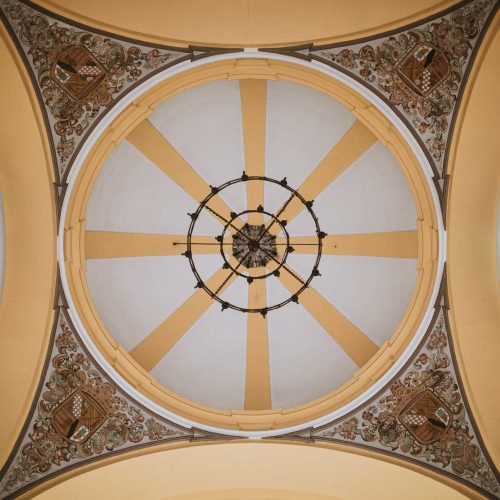
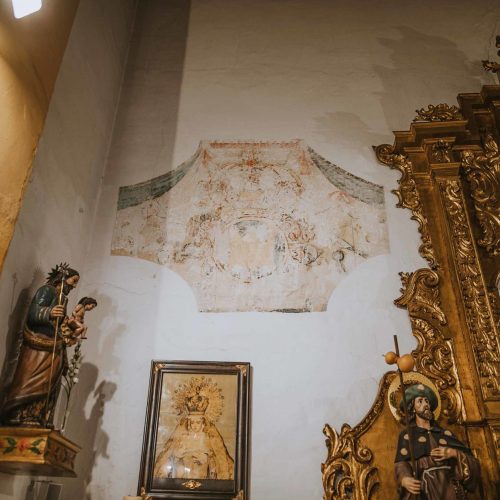
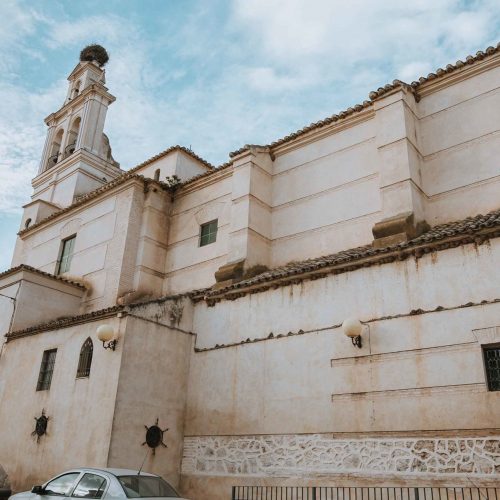
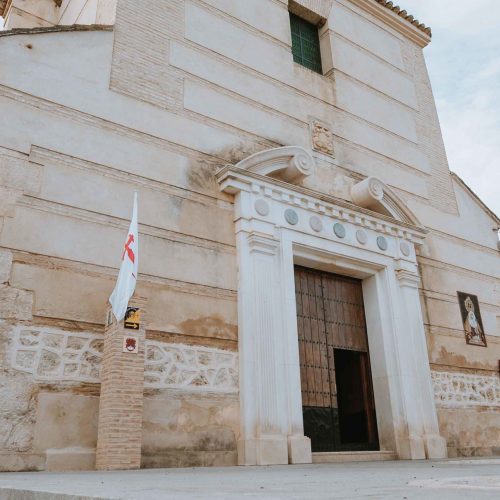
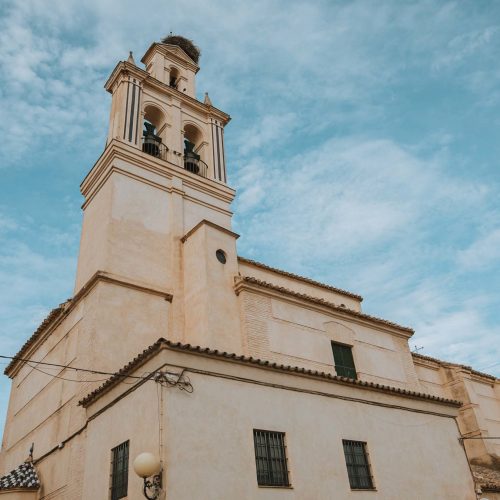
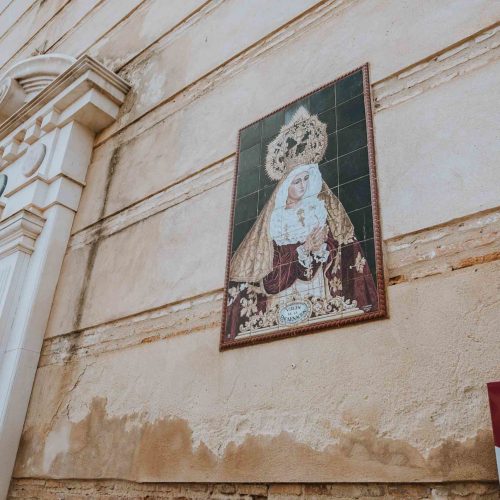
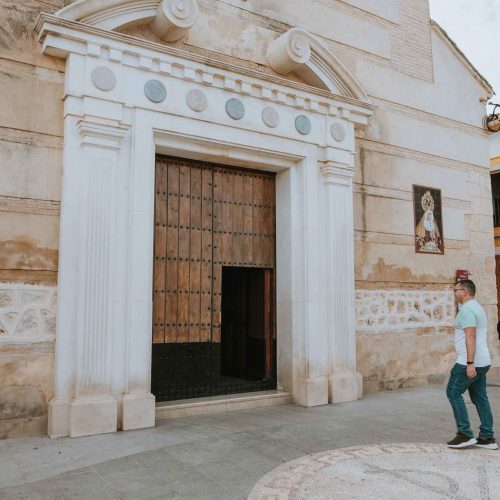
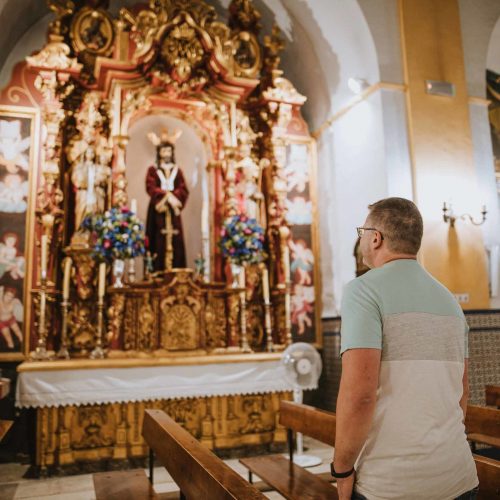
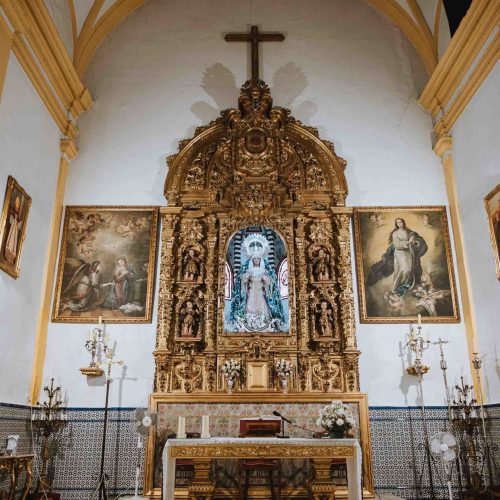
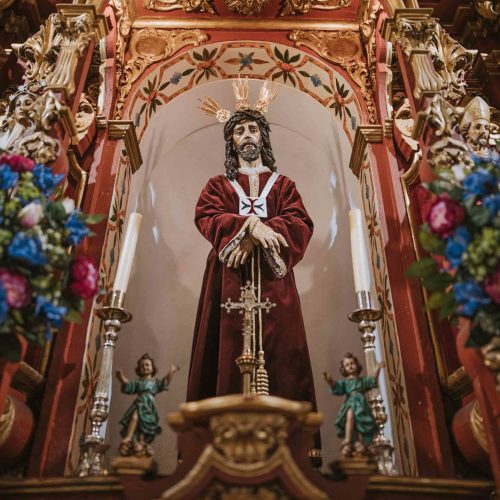
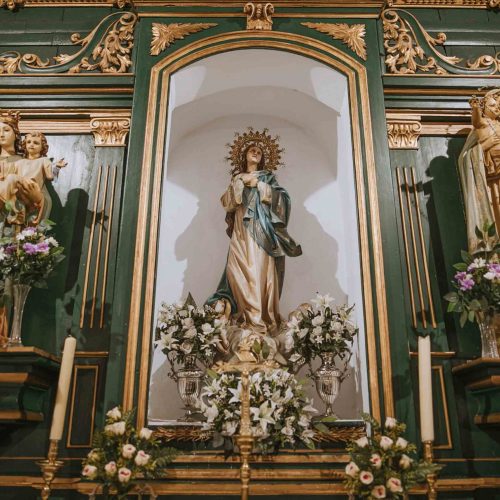
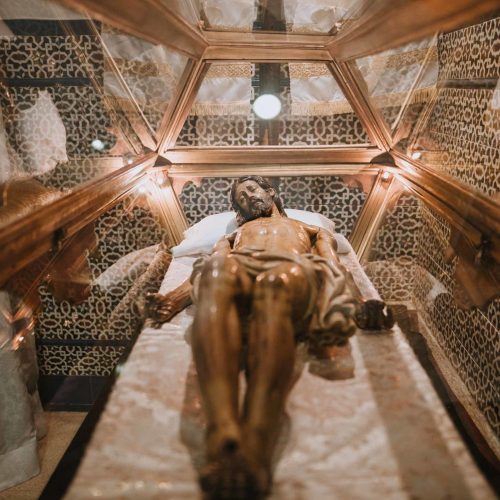
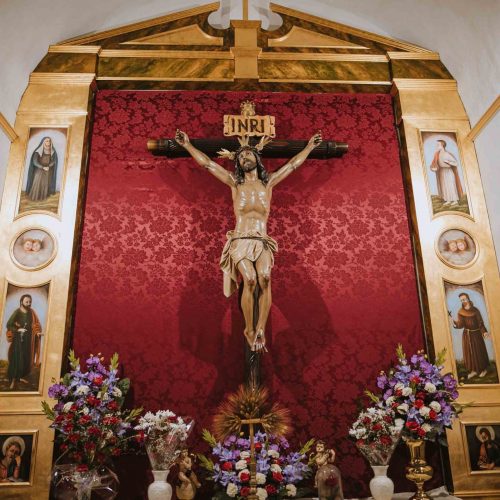
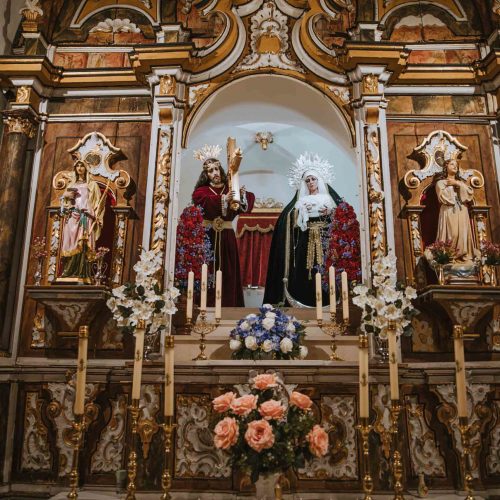
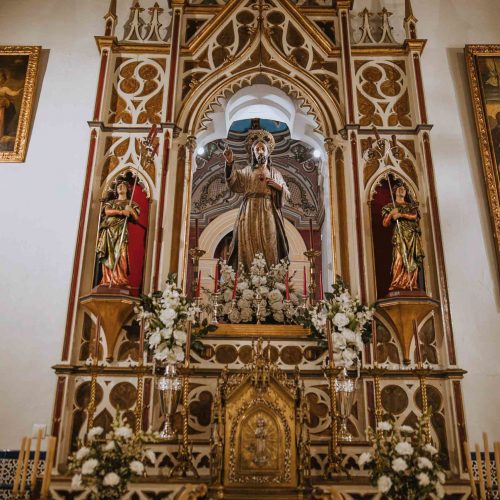
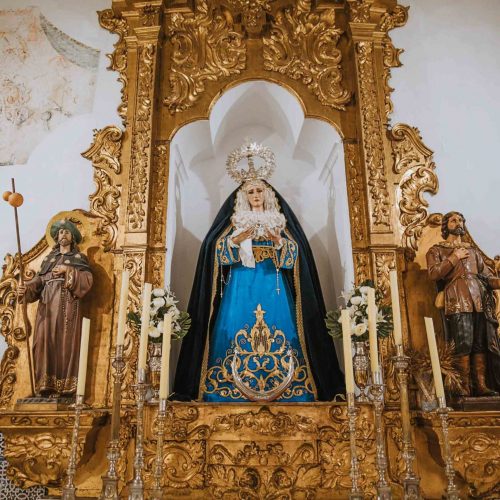
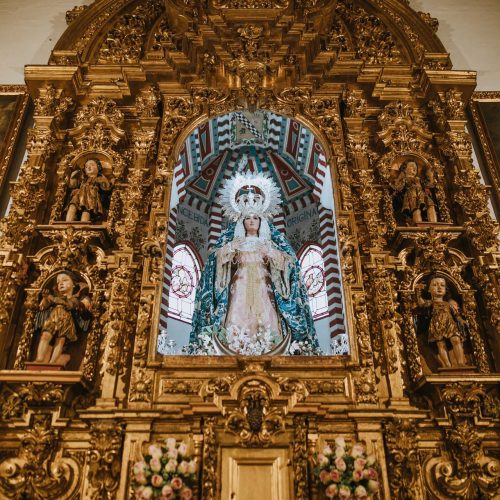
This building, undertaken by the Hermandad of Nuestro Padre Jesús Nazareno and María Santísima de la Esperanza, was completed in 2001. Today, it has: a chapel for the images, from where they depart every Good Friday, several rooms to house the patrimony and belongings of the Hermandad , as well as a space destined to fulfill the traditional function of a cuartelillo.
Nuestro Padre Jesús Nazareno, one of its two main figures, is the oldest image of Casariche, as it was the only one that did not end up in the flames during the burning of 21 July 1936, when the Civil War had just begun. Although its author and exact date are unknown, its features correspond to the Granada school and various documents point to its existence in the year 1700. Plus, this Hermandad venerates the image of “María Santísima de la Esperanza”, the work of Juan Ventura in 1993, which first took to the streets of the town in 1996.
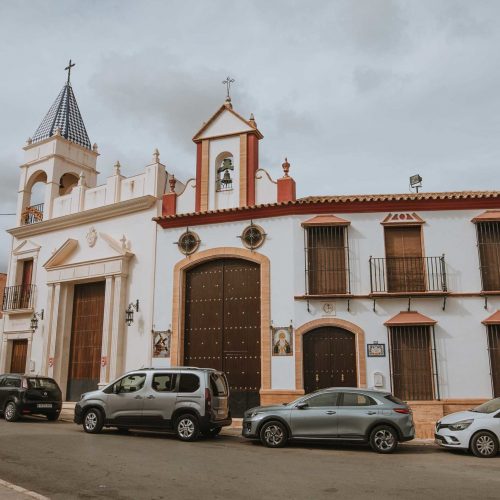
This Casa-Hermandad, blessed in 2004, is located in front of hthe church of Nuestra Señora de la Encarnación, so that, together with the Casa-Hermandad de Nuestro Padre Jesús Nazareno y María Santísima de la Esperanza, it forms the religious core of the town. The activity of this building multiplies with the arrival of Cuaresma, when its “cuartelillo” is opened and preparations for the Holy Thursday begin. During the rest of the year, its doors are opened for meetings of the Hermanos and tourist visits of those who wish to discover the enormous heritage that it treasures, among which is a set of hands of the original image of this historic Hermandad.
Its main works are Nuestro Padre Jesús Cautivo y Nuestra Señora de los Dolores, made by Antonio Castillo Lastrucci. The image of Christ, acquired on 1953, has facial features that show similarities with other works by the artist, such as “Jesús en su Presentación al Pueblo” (Hermandad Sacramental de San Benito, Seville). As same as the image of Nuestra Señora de los Dolores, dated 1936, which has similarities with María Santísima de La Hiniesta, patron saint of the Hermandad of the same name, again located in the city of Seville.
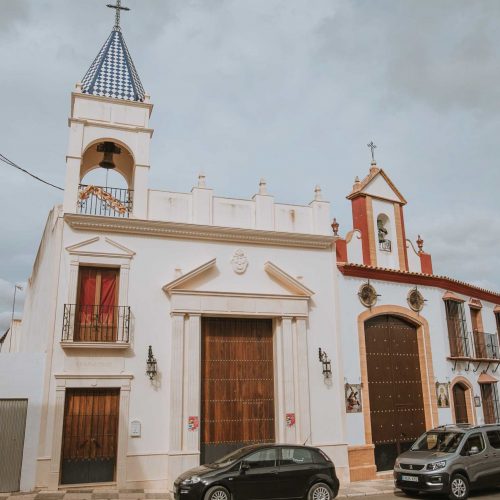
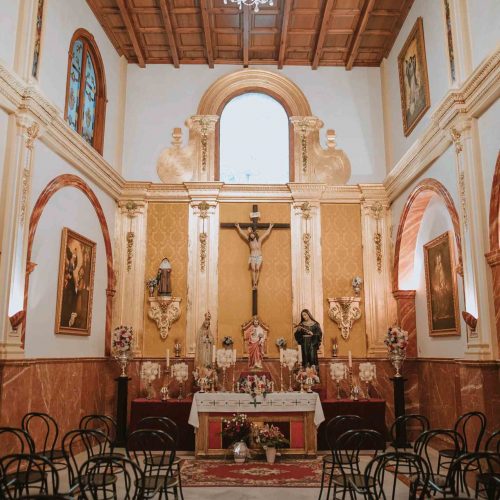
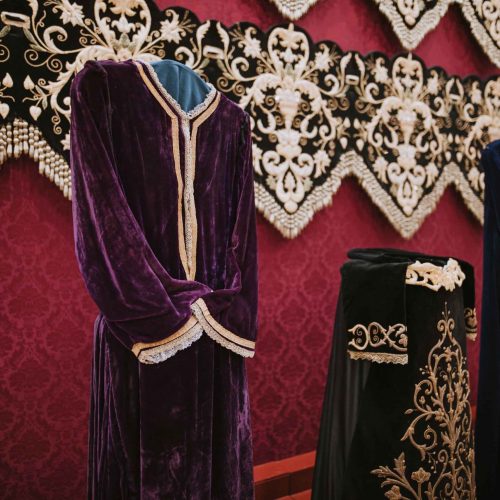
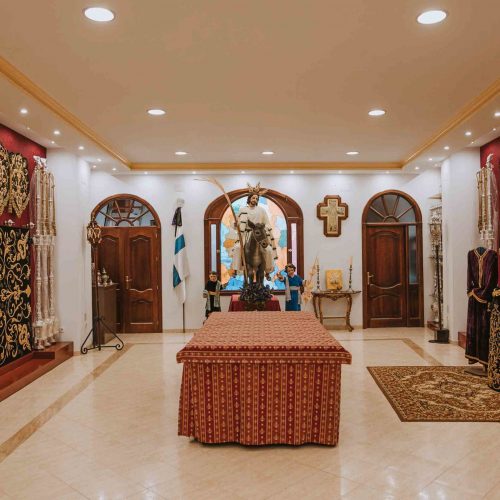
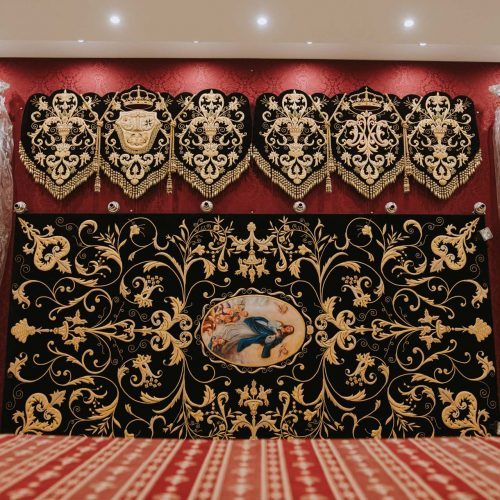
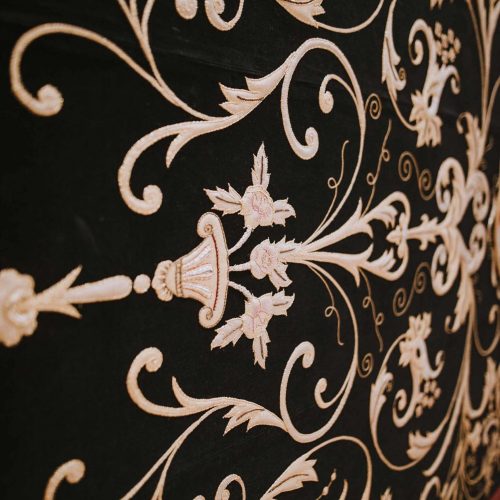
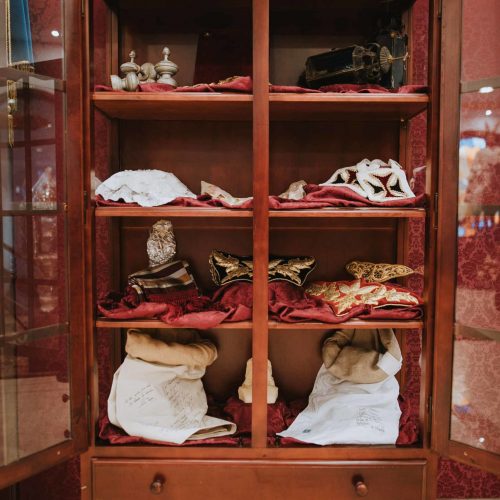
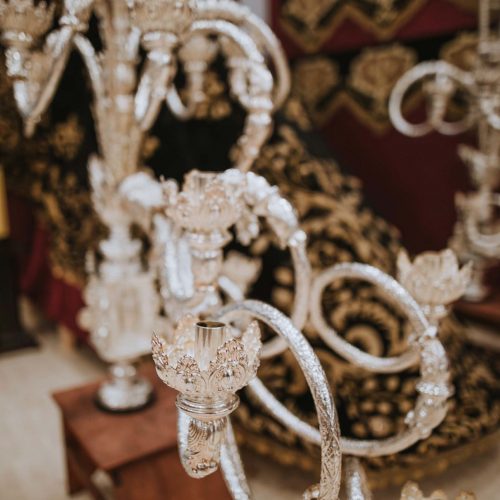
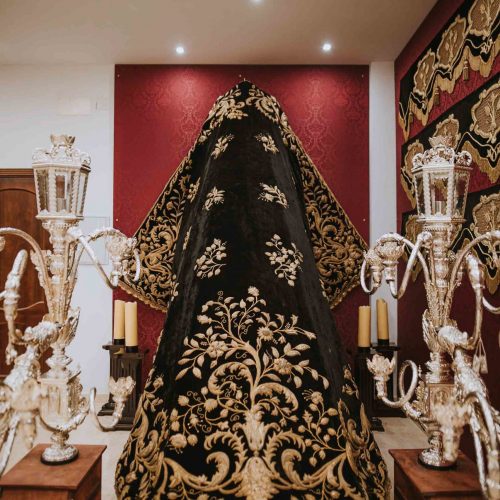
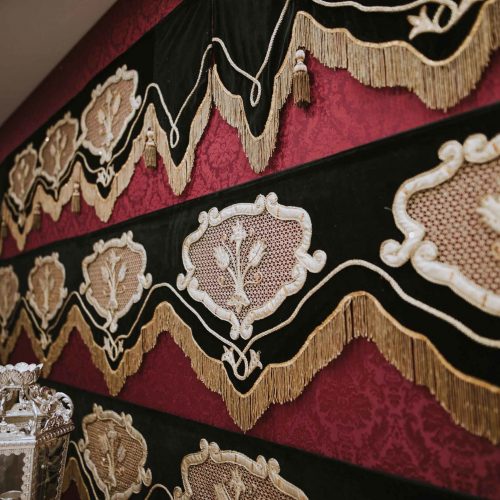
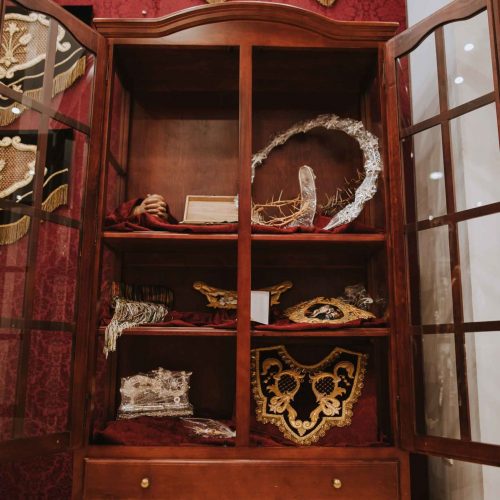
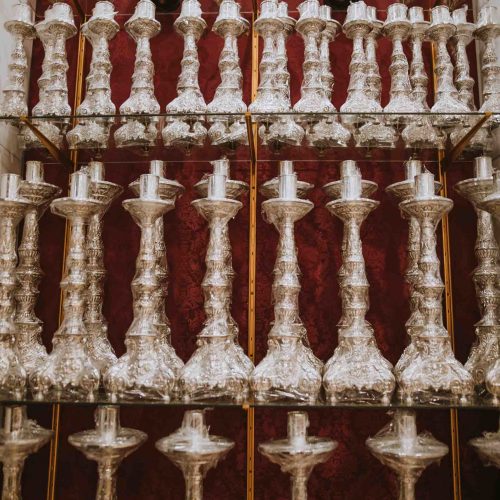
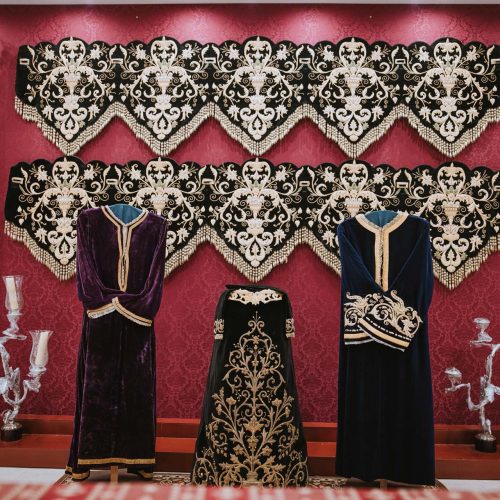
The Hermandad acquired land in 2004 in order to combine all its material heritage within the same headquarters. However, the Casa-Hermandad would not become a reality until 2010, when it began to house specific functions: meeting place, storage of goods and location of the “Cuartelillo”. Nowadays, the headquarters houses an exhibition of the main items of equipment, the neo-baroque processional float’s vents, a multitude of images dating back to its beginnings, and an endless number of elements and documents that narrate the past history of the corporation.
The Santísimo Cristo de la Expiración, the titular image, represents the scene of the crucifixion, where Jesus appears nailed to a cross moments before his death. The work was made in Olot in the mid-20th century, although it was finally acquired in Malaga. The Hermandad, founded in 1947, was the culmination of the efforts made by the priest Don José Flor Alfaro. He, together with members of the Catholic Action Workers’ Youth (JOAC), gave shape and meaning to this project; due to those who undertook its genesis, the Hermandad is popularly known as the Hermandad del Cristo de los Obreros (the Christ of the Workers).
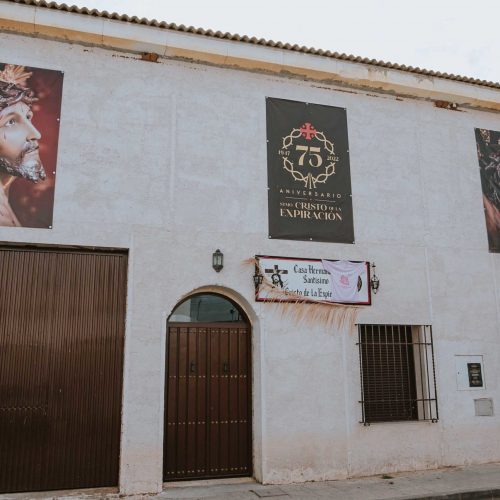
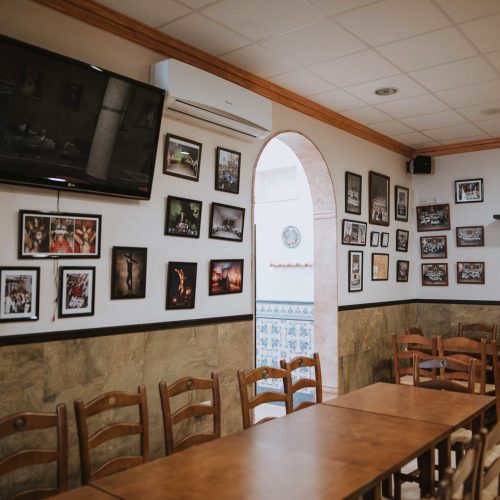
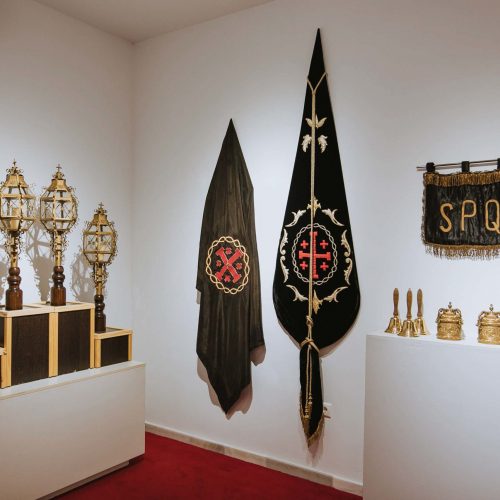
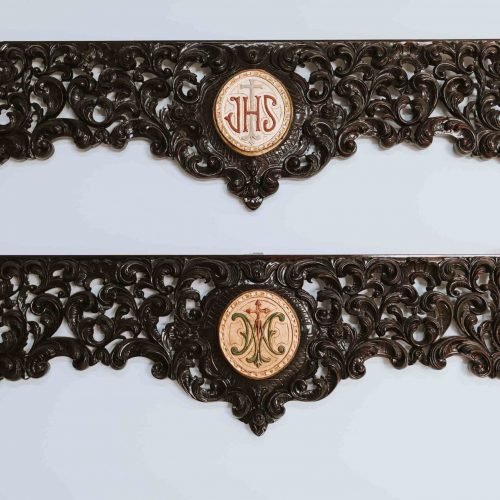
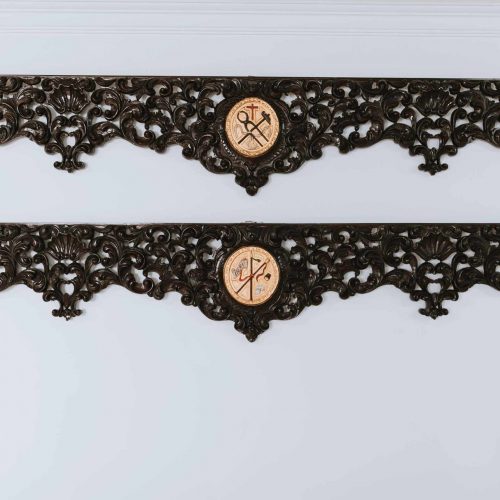
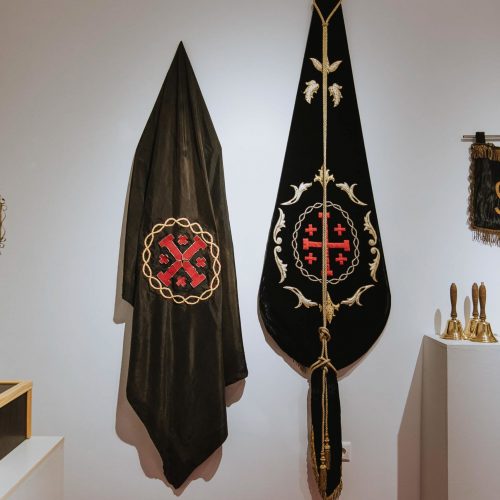
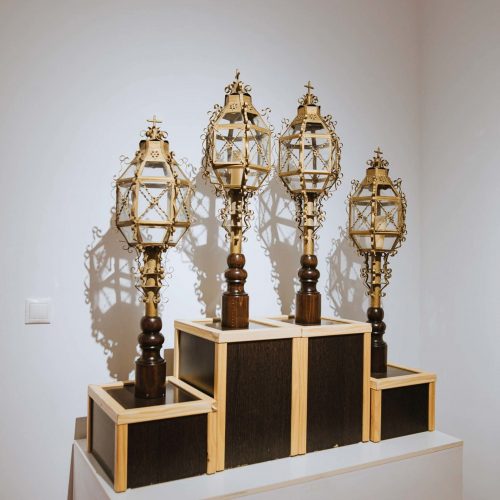
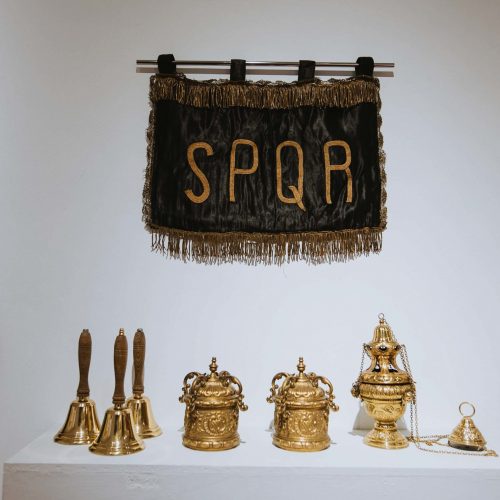
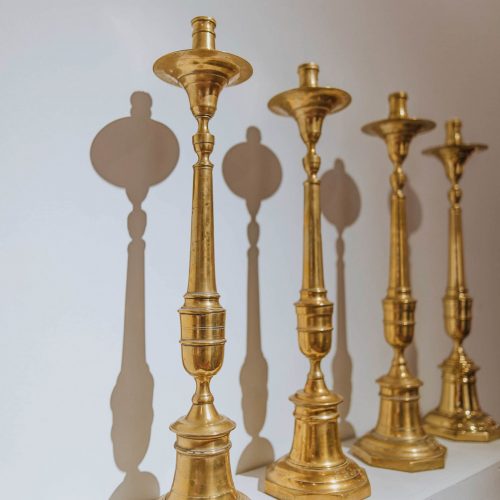
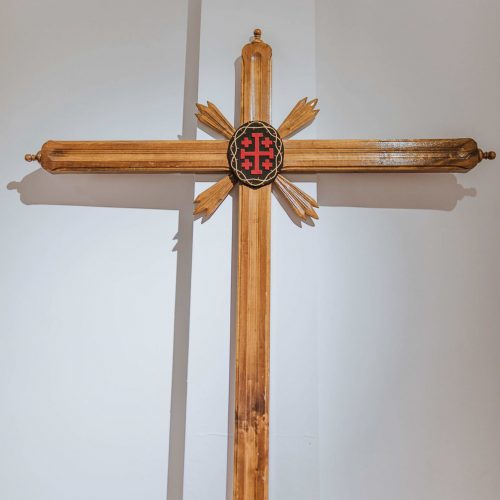
| Cookie | Tipo | Duración | Descripción |
|---|---|---|---|
| cookielawinfo-casilla-funcional | 0 | 11 meses | La cookie está configurada por GDPR Cookie Consent para registrar el consentimiento del usuario para las cookies en la categoría "Funcional". |
| cookielawinfo-casilla-necesario | 0 | 11 meses | Esta cookie está configurada por el complemento GDPR Cookie Consent. Las cookies se utilizan para almacenar el consentimiento del usuario para las cookies en la categoría "Necesario". |
| cookielawinfo-casilla-otros | 0 | 11 meses | Esta cookie está configurada por el complemento de consentimiento de cookies de GDPR. La cookie se utiliza para almacenar el consentimiento del usuario para las cookies en la categoría "Otros. |
| cookielawinfo-casilla-rendimiento | 0 | 11 meses | Esta cookie está configurada por el complemento de consentimiento de cookies de GDPR. La cookie se utiliza para almacenar el consentimiento del usuario para las cookies en la categoría "Rendimiento". |
| cookielawinfo-checkbox-análisis | 0 | 11 meses | Esta cookie está configurada por el complemento de consentimiento de cookies de GDPR. La cookie se utiliza para almacenar el consentimiento del usuario para las cookies en la categoría "Análisis". |
| vista_política_cookies | 0 | 11 meses | La cookie está configurada por el complemento GDPR Cookie Consent y se utiliza para almacenar si el usuario ha dado su consentimiento o no para el uso de cookies. No almacena ningún dato personal. |
| Cookie | Tipo | Duración | Descripción |
|---|---|---|---|
| cookielawinfo-casilla-funcional | 0 | 11 meses | La cookie está configurada por GDPR Cookie Consent para registrar el consentimiento del usuario para las cookies en la categoría "Funcional". |
| cookielawinfo-casilla-necesario | 0 | 11 meses | Esta cookie está configurada por el complemento GDPR Cookie Consent. Las cookies se utilizan para almacenar el consentimiento del usuario para las cookies en la categoría "Necesario". |
| cookielawinfo-casilla-otros | 0 | 11 meses | Esta cookie está configurada por el complemento de consentimiento de cookies de GDPR. La cookie se utiliza para almacenar el consentimiento del usuario para las cookies en la categoría "Otros. |
| cookielawinfo-casilla-rendimiento | 0 | 11 meses | Esta cookie está configurada por el complemento de consentimiento de cookies de GDPR. La cookie se utiliza para almacenar el consentimiento del usuario para las cookies en la categoría "Rendimiento". |
| cookielawinfo-checkbox-análisis | 0 | 11 meses | Esta cookie está configurada por el complemento de consentimiento de cookies de GDPR. La cookie se utiliza para almacenar el consentimiento del usuario para las cookies en la categoría "Análisis". |
| vista_política_cookies | 0 | 11 meses | La cookie está configurada por el complemento GDPR Cookie Consent y se utiliza para almacenar si el usuario ha dado su consentimiento o no para el uso de cookies. No almacena ningún dato personal. |
| Cookie | Tipo | Duración | Descripción |
|---|---|---|---|
| cookielawinfo-casilla-funcional | 0 | 11 meses | La cookie está configurada por GDPR Cookie Consent para registrar el consentimiento del usuario para las cookies en la categoría "Funcional". |
| cookielawinfo-casilla-necesario | 0 | 11 meses | Esta cookie está configurada por el complemento GDPR Cookie Consent. Las cookies se utilizan para almacenar el consentimiento del usuario para las cookies en la categoría "Necesario". |
| cookielawinfo-casilla-otros | 0 | 11 meses | Esta cookie está configurada por el complemento de consentimiento de cookies de GDPR. La cookie se utiliza para almacenar el consentimiento del usuario para las cookies en la categoría "Otros. |
| cookielawinfo-casilla-rendimiento | 0 | 11 meses | Esta cookie está configurada por el complemento de consentimiento de cookies de GDPR. La cookie se utiliza para almacenar el consentimiento del usuario para las cookies en la categoría "Rendimiento". |
| cookielawinfo-checkbox-análisis | 0 | 11 meses | Esta cookie está configurada por el complemento de consentimiento de cookies de GDPR. La cookie se utiliza para almacenar el consentimiento del usuario para las cookies en la categoría "Análisis". |
| vista_política_cookies | 0 | 11 meses | La cookie está configurada por el complemento GDPR Cookie Consent y se utiliza para almacenar si el usuario ha dado su consentimiento o no para el uso de cookies. No almacena ningún dato personal. |
| Cookie | Tipo | Duración | Descripción |
|---|---|---|---|
| cookielawinfo-casilla-funcional | 0 | 11 meses | La cookie está configurada por GDPR Cookie Consent para registrar el consentimiento del usuario para las cookies en la categoría "Funcional". |
| cookielawinfo-casilla-necesario | 0 | 11 meses | Esta cookie está configurada por el complemento GDPR Cookie Consent. Las cookies se utilizan para almacenar el consentimiento del usuario para las cookies en la categoría "Necesario". |
| cookielawinfo-casilla-otros | 0 | 11 meses | Esta cookie está configurada por el complemento de consentimiento de cookies de GDPR. La cookie se utiliza para almacenar el consentimiento del usuario para las cookies en la categoría "Otros. |
| cookielawinfo-casilla-rendimiento | 0 | 11 meses | Esta cookie está configurada por el complemento de consentimiento de cookies de GDPR. La cookie se utiliza para almacenar el consentimiento del usuario para las cookies en la categoría "Rendimiento". |
| cookielawinfo-checkbox-análisis | 0 | 11 meses | Esta cookie está configurada por el complemento de consentimiento de cookies de GDPR. La cookie se utiliza para almacenar el consentimiento del usuario para las cookies en la categoría "Análisis". |
| vista_política_cookies | 0 | 11 meses | La cookie está configurada por el complemento GDPR Cookie Consent y se utiliza para almacenar si el usuario ha dado su consentimiento o no para el uso de cookies. No almacena ningún dato personal. |
| Cookie | Tipo | Duración | Descripción |
|---|---|---|---|
| cookielawinfo-casilla-funcional | 0 | 11 meses | La cookie está configurada por GDPR Cookie Consent para registrar el consentimiento del usuario para las cookies en la categoría "Funcional". |
| cookielawinfo-casilla-necesario | 0 | 11 meses | Esta cookie está configurada por el complemento GDPR Cookie Consent. Las cookies se utilizan para almacenar el consentimiento del usuario para las cookies en la categoría "Necesario". |
| cookielawinfo-casilla-otros | 0 | 11 meses | Esta cookie está configurada por el complemento de consentimiento de cookies de GDPR. La cookie se utiliza para almacenar el consentimiento del usuario para las cookies en la categoría "Otros. |
| cookielawinfo-casilla-rendimiento | 0 | 11 meses | Esta cookie está configurada por el complemento de consentimiento de cookies de GDPR. La cookie se utiliza para almacenar el consentimiento del usuario para las cookies en la categoría "Rendimiento". |
| cookielawinfo-checkbox-análisis | 0 | 11 meses | Esta cookie está configurada por el complemento de consentimiento de cookies de GDPR. La cookie se utiliza para almacenar el consentimiento del usuario para las cookies en la categoría "Análisis". |
| vista_política_cookies | 0 | 11 meses | La cookie está configurada por el complemento GDPR Cookie Consent y se utiliza para almacenar si el usuario ha dado su consentimiento o no para el uso de cookies. No almacena ningún dato personal. |
| Cookie | Tipo | Duración | Descripción |
|---|---|---|---|
| cookielawinfo-casilla-funcional | 0 | 11 meses | La cookie está configurada por GDPR Cookie Consent para registrar el consentimiento del usuario para las cookies en la categoría "Funcional". |
| cookielawinfo-casilla-necesario | 0 | 11 meses | Esta cookie está configurada por el complemento GDPR Cookie Consent. Las cookies se utilizan para almacenar el consentimiento del usuario para las cookies en la categoría "Necesario". |
| cookielawinfo-casilla-otros | 0 | 11 meses | Esta cookie está configurada por el complemento de consentimiento de cookies de GDPR. La cookie se utiliza para almacenar el consentimiento del usuario para las cookies en la categoría "Otros. |
| cookielawinfo-casilla-rendimiento | 0 | 11 meses | Esta cookie está configurada por el complemento de consentimiento de cookies de GDPR. La cookie se utiliza para almacenar el consentimiento del usuario para las cookies en la categoría "Rendimiento". |
| cookielawinfo-checkbox-análisis | 0 | 11 meses | Esta cookie está configurada por el complemento de consentimiento de cookies de GDPR. La cookie se utiliza para almacenar el consentimiento del usuario para las cookies en la categoría "Análisis". |
| vista_política_cookies | 0 | 11 meses | La cookie está configurada por el complemento GDPR Cookie Consent y se utiliza para almacenar si el usuario ha dado su consentimiento o no para el uso de cookies. No almacena ningún dato personal. |